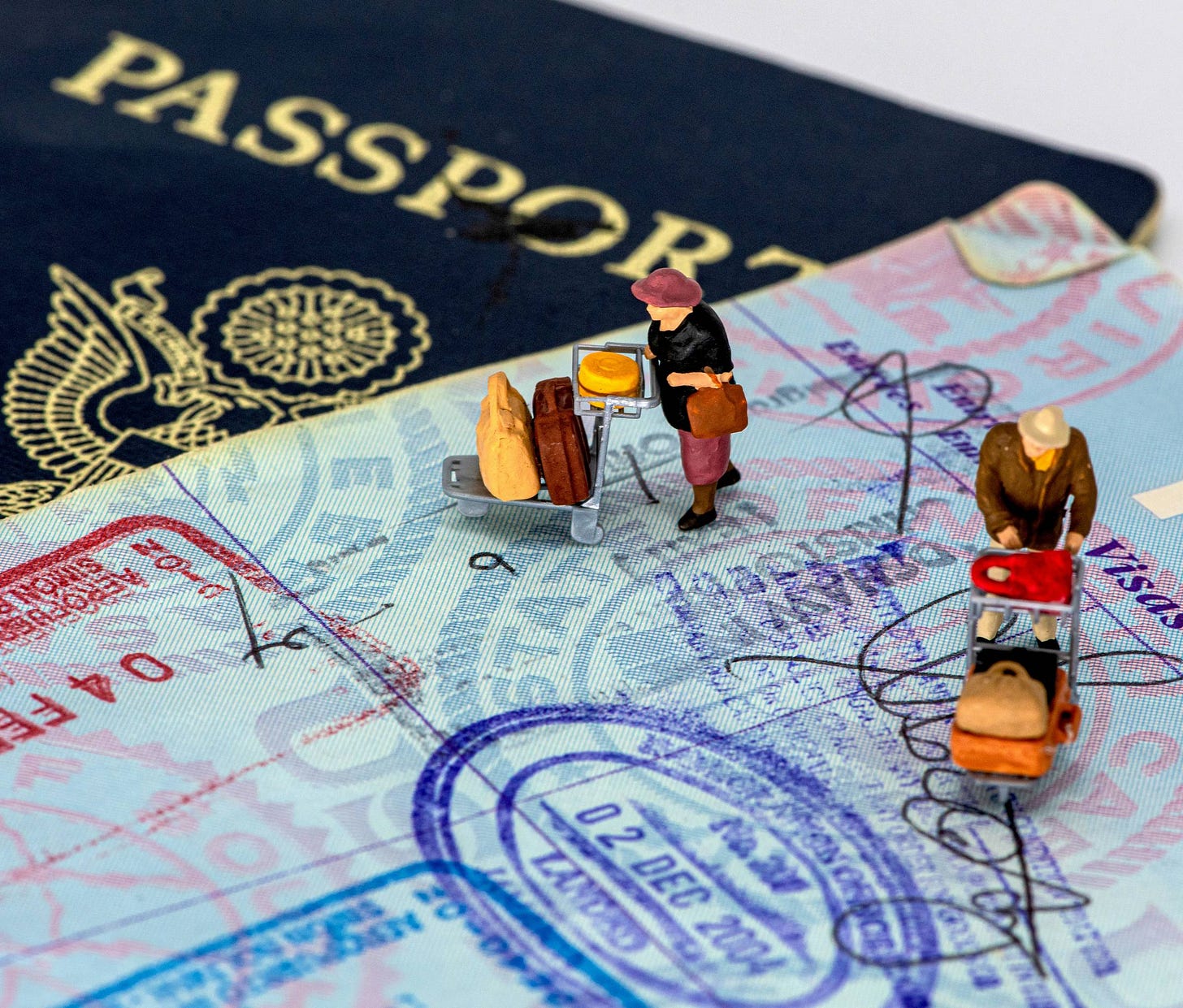The $905 U.S. Visa Advice

If an expert says it can't be done, get another expert. ~ David Ben-Gurion
Welcome to another edition of ScholAfrica. If this was forwarded to you, you can subscribe here.
Today, you will learn how to save money on U.S. visa interview by applying 15 Insider tips from a former visa officer.
Let's jump in:
Cost Savings
For a student visa interview, you will spend:
Visa fee: $185 (valid for one interview)
SEVIS fee: $350 (valid for one year)
My student visa was approved in my 4th interview. So, in my first three visa interviews, I spent:
($185 x 3) + ($350 x 1) = $905
$905 was wasted, and I still didn't get the visa. You can convert it to your currency and see what that gives you.
I know of other people who were approved on their fifth or seventh attempt, so you can imagine how much they spent before approval.
It is all worth it now, but I wish I knew better. All that money wouldn't have been wasted if I had sought the truth from a visa officer instead of following my desperation to give them the "perfect answers" I think they want to hear.
So, this newsletter will save you $905 or more.
Tips From a U.S. Visa Officer
Getting a U.S. visa is the last hurdle that everyone must pass before coming abroad.
Despite being very important, most people have no clue how to get their visas on their first try. And honestly, neither did I. As I mentioned earlier, I got my visa on my fourth visa interview. Lately, I have been watching videos made by former U.S. visa officers. They share tips about interviews so I can know what they expect. I wanted to find a simple system that anyone can use to get a U.S. visa.
Thirty videos later, I’ve found the top 15 insider tips for getting a U.S. visa approved.
For easy consumption, here are some definitions of terms:
F-1 visa: The official name for the student visa category.
DS-160: This is the form you will fill out before your visa interview. It contains all your details, such as your name, work history, education, travel history, and travel plans.
Visa interview: This is a discussion with the visa officer. Afterward, they will inform you whether your visa has been approved or denied.
Let’s jump straight in:
Avoid putting the Visa Officer in a bad mood. They approve visas based on how they feel, so make them feel good. You can do this by: - Scheduling your interview early in the morning. - Give them plenty of information when you answer. - Don’t ask them to repeat their questions over and over again.
Don’t give short answers. According to the law, the visa applicant is assumed guilty until they can prove innocent. It’s your job to convince the visa officer that you have no plans to immigrate. You have to provide enough information for them to feel that confident about you. Give them information-filled 5-second answers.
Visa interview decisions are not made ahead of time. The visa interview is the first time they look at your DS-160. When you get to the window, they check your stay length in the U.S., job, salary, past travel, and any notes on previous denials.
Fill out your DS-160 yourself, or if an agent fills it out for you, make sure you know everything about it. Whatever you say in your interview must match what you wrote in your DS-160.
Save a copy of your written DS-160 application before you submit it. Just before you submit, you’ll see the option to print each page. Use that to save it as a PDF to your computer. You’ll need to read through it before your interview, and you can’t retrieve it after you’ve submitted it.
Don’t treat the visa interview as a courtroom. It is not. Americans don’t like hierarchy, so they feel uncomfortable when called Sir or Ma. You can start your greeting with “Good morning, Sir” or “Good morning, Ma,” but that’s where it should end. The rest of the conversation should be like you’re speaking to your colleague at work. (professional but conversational)
Your story will make you different. Many applicants come with answers they got from the internet. Some might even use some from my video here. But they miss the point. You should not repeat internet answers word for word. You can get inspiration from them, but make it your own. Tell your own story.
Know your strengths before the interview. Every applicant is different, and we all have strengths and “potential” weaknesses. Before the interview, identify your strengths. Highlight them in your DS-160 and during the visa interview. Strengths can include finances, like scholarships or a wealthy sponsor. They might also be your academic merit, such as test scores. Additionally, your future plans after earning the degree matter too.
Be ready to discuss your weaknesses, but don’t be worried about them. If you’re worried about a gap in your DS-160 or a past visa denial, the officer will notice your concern. This could lead to a denial for your application.
You can find out the questions you might be asked before a visa interview. While you wait for your interview, listen to the questions the officer asks the person before you. Start thinking about your own answers. That might most likely be what you’ll be asked. Except you have a special case like a previous visa denial.
Make sure you know everything about your sponsor’s financial situation. You need to know their job title, the company they work at, how much money they make, and how much money they have. It is uncomfortable to ask your parents or relatives some of these questions, but you need to know them.
Visa officers don’t like seeing documents. In all five visa interviews, I was never asked to show my documents, even though I carried a lot. Visa officers know documents can be forged, so they don’t like seeing them. They prefer what you say and what they see in your DS-160.
Don’t say “ties” and “home country” in your visa interview. These are commonly used words among visa applicants. They are also there in the visa regulations that the VO uses. But they aren’t used in our day-to-day conversations. When last did you say, “That is how life is here in our home country.”?
Don’t memorize answers for your visa interview. The interview is a lie detection test. If you memorize your answers, the visa officer can’t connect with you. That automatically means you aren’t being honest.
You can politely reverse a visa denial “just” before it happens. Usually, when an applicant is about to be denied, the officer will start with, “Sorry, unfortunately, at this time…”. When you hear this, you can cut in and say, “Excuse me, Sir/Ma’am, please, can I say something?” Then you tell them new information that strengthens your case for approval.
I wish I had known these things before my first visa interview on December 31, 2018. My story would probably have been different.
In all things, we give God the Glory.
And that’s all for today.
See you next Wednesday.
Nzube Ohalete
Find me on YouTube or LinkedIn
Whenever you're ready, there are 2 ways I can help you:
F1 Visa Interview Consultation: Get your F1 visa in your next interview. I combine my five F1 visa interview experiences with my expertise in learning from visa officers to thoroughly prepare you for your visa interview. We will identify your strengths and prepare you to deliver them confidently. Your story is the secret to your visa approval.
The Scholarship Accelerator: My detailed mentorship program specifically designed to help you secure U.S. scholarships for your Master's and Ph.D. I share 7 years of U.S. admission and scholarship expertise, proven strategies, and mistakes to avoid. This course shows you what the admission committee is looking for.




